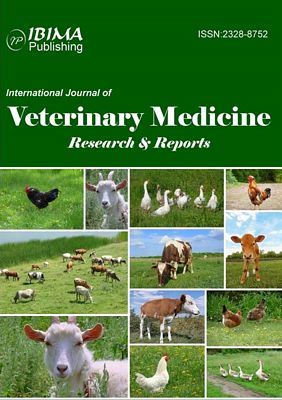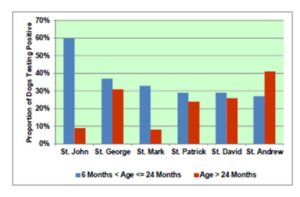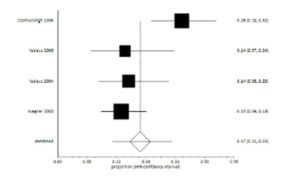1. Allert, C., 1995. “Reducing risk of zoonotic diseases- a shared responsibility. Roundtable:Veterinarians, physicians jointly responsible”. Journal of the American Veterinary Medical Association, 207 (4) 403-404.
Google Scholar
2. Anderson, E.M., Davis, J.A., 2014. “First record of Armigeres malayi and Armigeres milnensis in Timor-Leste”.Journal of the American Mosquito Control Association. 30 (1) 51-53.
Publisher – Google Scholar
3. Blagburn, B.L., Dillon, A.R., Arther, R.G., Newton, J.C., 2011. “Comparative efficacyof four commercially available heartworm preventive products against the MP3laboratory strain of Dirofilaria immitis”. Veterinary Parasitology 176(2-3): 189-194
Publisher – Google Scholar
4. Cancrini, G., Gabrielli, S., 2007. Vectors of Dirofilaria nematodes: Biology, behaviourand host/parasite relationships. In: Genchi, C., Rinaldi, L., Cringoli, G. (Eds.), Dirofilaria immits and D. repens in Dogs and Cat and Human infections. Naples, Italy
Google Scholar
5. Duran-Struuck, R., Jost, C., Hernandez, A., H., 2005. “Dirofilaria immtis prevalence incanine population in the Samana Peninsula (Dominican Republic)- June 2001”. Veterinary Parasitology. 133 (4) 323-327.
Publisher – Google Scholar
6. Garcez, L.,M., de Souza, N., F., Mota, E., F., Dickson, L.,A., Abreu, W., U., CavalcantiVde, F., Gomes, P., A., 2006. “Focus on canine heartworm disease in Majaró Island, North of Brazil: A risk factor for human health”. Revista Da Socieda de Brasileira DeMedicina Tropical 39 (4) 333-336.
7. Genchi, C., Rinaldi, L., Cascone, C., Mortarino, M., Cringoli, R., 2005. “Is heartwormdisease really spreading in Europe?” Veterinary Parasitology. 133 (2-3) 137-148.
Publisher – Google Scholar
8. Genchi, C., Rinaldi, L., Mortarino, M., Genchi, M., Cringoli, G., 2009. “Climate and Dirofilaria infection in Europe.”Veterinary Parasitology. 163 (4) 286-292.
Publisher – Google Scholar
9. Hesselink, J., W., 1988. “The prevalence of heartworm (Dirofilaria immitis) in dogsof Curacao”. Tijdschrift voor Diergeneeskunde. 113 (15-16) 853-859.
Google Scholar
10. Knonefeld, M., Kampen, H., Sassnau, R., Werner, D., 2014. “Molecular detection of Dirofilaria immitis, Dirofilaria repens and Setaria tundra in mosquitoes from Germany” Parasites and Vectors. 7: 30.
Publisher – Google Scholar
11. Kulinskaya, E., Morgenthaler, S., and Staudte, R.G., 2008. Meta-analysis: A guide to calibrating
and combining statistical evidence. Wiley, U.S.A.
Google Scholar
12. Leandro, G., 2004. Meta-analysis in Medical Research: The Handbook for the Understandingand Practice of Meta-analysis. Wiley, USA.
13. Lipsey, M.W., and Wilson, D. B., 2000. Practical Meta-analysis. Sage Publications, U.S.A.
14. Manrique-Saide, P., Escobedo-Ortegón, J., Bolio-González, M., Sauri- Arceo, C., Dzib- Florez, S., Guillermo-May, G., Ceh-Pavía, E., Lenhart, A., 2010. “Incriminationof the mosquito, Aedes taeniorhynchus, as a primary vector of heartworm, Dirofilariaimmitis, in coastal Yucatan, Mexico”. Medical and Veterinary Entomology 24 (4), 456-460.
Publisher – Google Scholar
15. Martini, M., Poglayen, G., Capelli, G., Roda, R., 1991. “Diagnosis of canine filariosis:Relative sensitivity and specificity of some haematological techniques”. Angewandte Parasitologie. 32(3) 133-136.
Google Scholar
16. Miliaras, D., Meditskou, S., Kelekis, A., Papachristos, I., 2010. Human pulmonarydirofilariasis: One more case in Greece suggests that Dirofilaria is a rather commoncause of coin lesions in the lungs in endemic areas of Europe. International Journal ofImmunopathology and pharmacology 23 (1) 345-348.
Google Scholar
17. Monchy, D., Levenes, H., Guegan, H., Poey, C., Dubourdieu, D., 1993. Pulmonary dirofilariasis. Médecine tropicale: revue du Corps de santé colonial 53 (3) 366-371.
18. Morchón, R., Carretón, E., González-Miguel, J., Mellado-Hernández, I., 2012. Heartworm disease (Dirofilaria immitis) and their vectors in Europe- New distribution trends. Frontiers in Physiology 3:196.
19. Retnasabapathy, A., San, K.T., 1976. Incidence of canine heartworm (Dirofilaria immitis)
in Malaysia. The Veterinary Record 98 (4) 68-69.
20. Robinson, N.B., Chavez. C.M., Conn, J.H., 1977. Pulmonary dirofilariasis in man: a case report and review in literature. Journal of Thoracic and Cardiovascular Surgery74 (3) 403-408.
21. Serrão, M.L., Labarthe, N., Lourenço-de-Oliveira, R., 2001. Vector competence of Aedes aegypti (Linnauus 1972) Rio de Janeiro strain, to Dirofilaria immitis (Leidy 1856).Memórias do Instituto Oswaldo Cruz. 96: (5) 593-598.
Publisher – Google Scholar
22. Sutton, A. J., Sutton, A. J., Abrams, K. R., Jones, D.R., Sheldon, T.A., and Song, F., 2000.
Methods for Meta-analysis in Medical Research. Wiley, U.S.A.
Google Scholar
23. Takeuchi, T., Asami, K., Kobayashi, S., Masuda, M., Tanabe, M., Miura, S., Asakawa, K.,Murai, T., 1981. Dirofilaria immitis infection in man: report of a case of the infection in heart and inferior vena cava from Japan. American Journal of Tropical Medicine and Hygiene 30 (5) 966-969.
Google Scholar
24. Theis, J.H., 2005. Public health aspects of Dirofilariasis in the United States. Veterinary
Parasitology 133(2-3) 157-180.
Publisher – Google Scholar
25. Tiawsirisup, S., Khlaikhayai, T., Nithiuthai, S., 2005. A preliminary study on in vitro transmission of Dirofilaria immitis infective larvae by Aedes aegypti (L.) (Diptera:Culicidae). The Southeast Asian Journal of Tropical Medicine and Public Health 36 Suppl 4: 86-89.
Google Scholar
26. Vezzani, D., Eiras, D.F., Wisnivesky, C., 2006. Dirofilariasis in Argentina: Historical Review and first report of Dirofilaria immitis in a natural mosquito population. VeterinaryParasitology 136 (3-4) 259-273
Publisher – Google Scholar
27. Vezzani. D., Mesplet, M., Fontanarrosa, M.F., Schnittger, L., 2011. PCR detection of Dirofilaria immitis Aedes aegypti and culex pipiens from urban temperate Argentina.Parasitology Research. 108 (4) 985-989.
Google Scholar







